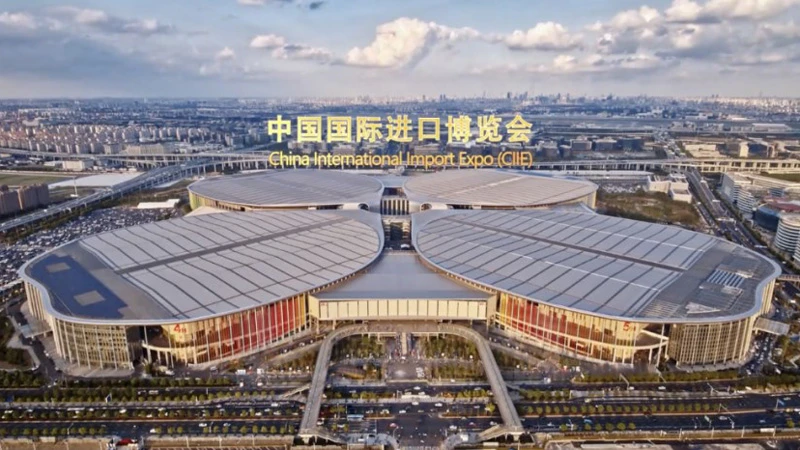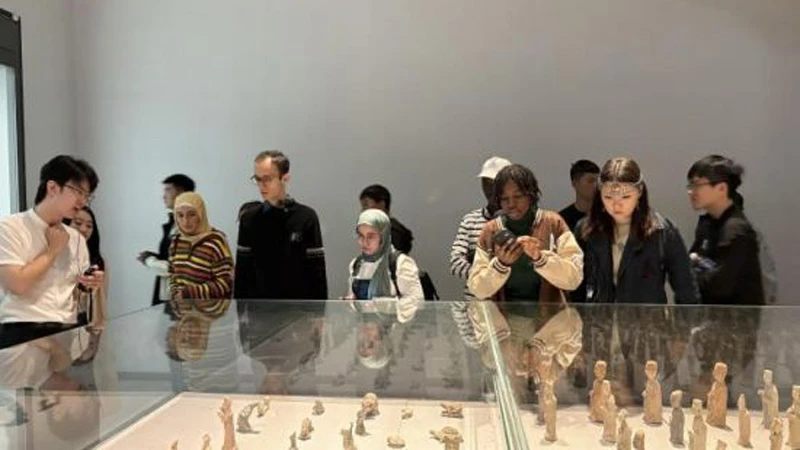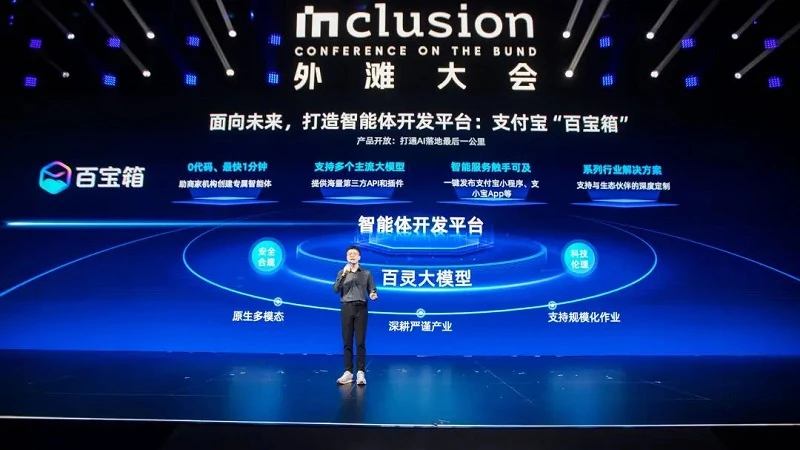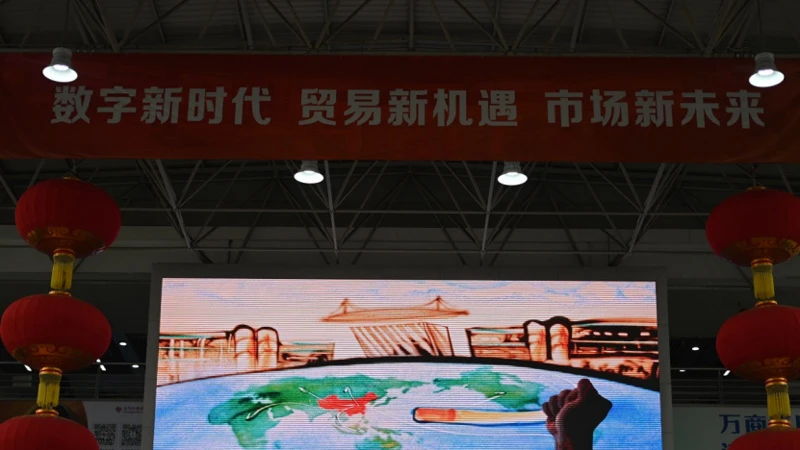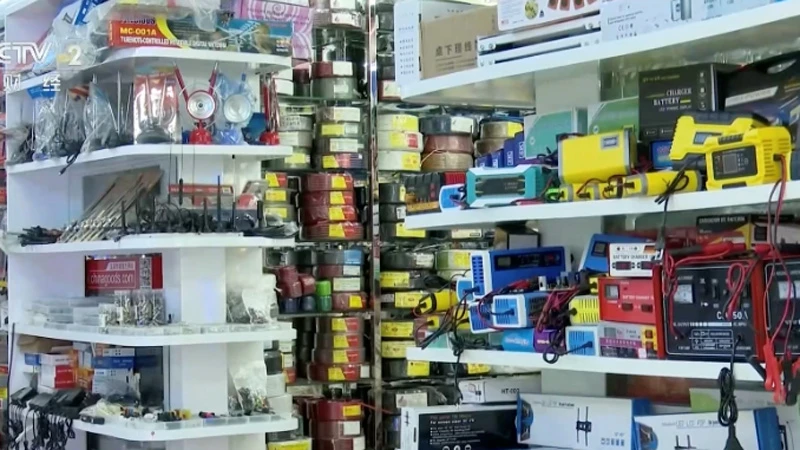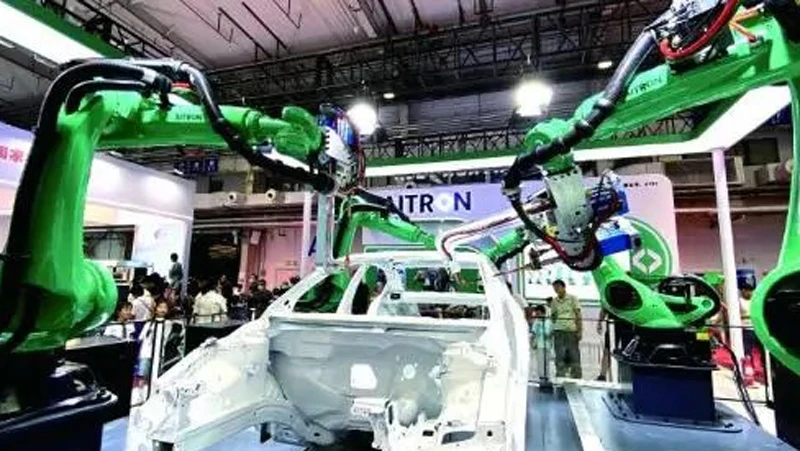-
China's Hanfu Industry Consumer Analysis
1. Public Awareness of Hanfu and Brand Recognition According to a research report by Jingzhi, public understanding of Hanfu varies significantly. Specifically, 45.9% of respondents reported a "good understanding" of Hanfu and could identify its basic styles; 43.1% had a "general familiarity"; while only 11.0% claimed limited or no knowledge. Geographically, residents of first-tier cities (e.g., Beijing, Shanghai, Guangzhou, Shenzhen), new first-tier cities, and second-tier cities demonstrated higher awareness, attributable to these regions’ strong cultural environments, rapid information dissemination, economic development, and greater demand for cultural consumption. Regarding brand recognition, despite rapid market growth in recent years, overall brand awareness remains relatively low. Apart from leading brands like Han Shang Hua Lian, Chong Hui Han Tang, and Shi San Yu, most Hanfu brands still struggle with visibility. This is largely due to the industry’s early-stage development, fragmented market structure, and the absence of dominant brands with broad influence. Additionally, limited marketing efforts—primarily relying on social media and word-of-mouth—restrict brand exposure. 2. Channels of Exposure and Hanfu Usage Scenarios Key channels for learning about Hanfu include historical dramas (59.3%), social media (54.7%), Hanfu cultural clubs (49.1%), historical literature (40.7%), and museum exhibitions (38.8%). Historical dramas visually showcase Hanfu’s elegance through intricate…- 0
- 0
- 5
-
How Did Caoxian Become the Center of Hanfu Industry?
Caoxian: The Rising Star in the Hanfu Industry Caoxian was once well - known for producing dance costumes and photography studio clothing. In recent years, the Hanfu industry has emerged as a new cultural calling card, and now Caoxian has become the 'cosmic center' of China's Hanfu industry. From its humble beginnings to continuous growth, transformation, and rapid rise, Caoxian's Hanfu has won the favor of countless Hanfu enthusiasts with its unique charm and exquisite craftsmanship. It has become a leader in the national Hanfu market, leading the trend of the Hanfu industry. Walking into Daji Town in Caoxian, you can feel a strong Hanfu cultural atmosphere. In the streets of Sunzhuang Village in Daji Town, busy Hanfu entrepreneurs can be seen everywhere. Among them, there are former photography studio photographers, housewives, and newly - graduated college students. It is these entrepreneurs who have opened a new chapter in Caoxian's Hanfu industry with their wisdom and courage. The Evolution of Caoxian's Clothing Industry In the 1990s, the clothing industry in Sunzhuang Village, Caoxian, quietly started, mainly producing photography studio clothing and dance costumes. At that time, clothing enterprises gradually gained a foothold in the market with their exquisite craftsmanship and…- 0
- 0
- 9
-
Saudi Arabia's Bold Move at China's Zhuhai Airshow
The 15th China International Aviation & Aerospace Exhibition (Zhuhai Airshow), which kicked off with great fanfare in Guangdong, has attracted the attention of global industry players. However, this year, Saudi Arabia stands out not only as a key attendee but also as a prominent exhibitor, signalling a shift in its approach to defence cooperation and procurement. This move highlights Saudi Arabia's increasing role in the global defence market, particularly its growing partnership with China. Saudi Arabia: From Buyer to Exhibitor For years, Saudi Arabia has been a significant player in the global defence market, particularly at airshows like Zhuhai, where it has been known to make substantial purchases of military equipment. However, this year's Zhuhai Airshow marks a departure from the norm. Saudi Arabia, traditionally a buyer of military hardware, has come to the event as an exhibitor, marking a significant shift in its strategy. With a 300-square-meter exhibition space and an ambitious slogan of "Arriving Empty, Leaving Full," Saudi Arabia's presence at the airshow has captured the curiosity of media and attendees alike. At first glance, the Saudi pavilion appeared sparsely equipped, leading some visitors to wonder what the Kingdom was showcasing. However, as the exhibits began to take…- 0
- 0
- 39
-
A New Era of Sino-Peruvian Collaboration
On November 5th, 2024, the Peruvian capital of Lima became a vibrant centre for business, culture, and opportunity as the "Opportunities China · Brand Chongqing" promotion event unfolded at the China-Peru Friendship Center. Initially expecting around 65 attendees, this grand event saw an overwhelming turnout of over 200 individuals, all eager to explore the opportunities that Chongqing—China's western powerhouse—has to offer. The event highlighted Chongqing's thriving industries and sought to strengthen ties with Peru and Latin America, positioning the city as a critical player in the region's economic future. The promotion featured six significant aspects of Chongqing's growth: the city's innovative manufacturing ("Made in Chongqing"), educational opportunities ("Study in Chongqing"), investment potential ("Invest in Chongqing"), and cultural heritage ("The Beauty of Chongqing"), among others. These themes were showcased through various engaging activities, including a Chongqing city photo exhibition, tastings of Chongqing's renowned spicy noodles, and presentations on Chongqing's industrial strength. However, the unique cultural exchange that brought together Chinese and Peruvian traditions left the most lasting impression. Chongqing's Economic Growth and Peruvian Opportunities Chongqing is one of China's fastest-growing municipalities, with robust industries spanning from manufacturing and automotive to technology and tourism. One of the event's highlights was the promotion…- 0
- 0
- 42
-
2024, the 7th China International Import Expo
At the 7th China International Import Expo (CIIE), the China Pavilion symbolizes the country's innovative spirit and ambition to redefine global cooperation through modernization. Featuring cutting-edge technologies and products, the pavilion is a window into China's vision for the future—a future where the country not only strengthens its own development but also fosters partnerships with nations around the world. From the awe-inspiring "Fighter" model to humanoid robots like "Tiangong (天宫)" and advanced 5G brilliant factory demonstrations, every exhibit in the China Pavilion is designed to show the world how China's modernization efforts are not just for domestic progress but for global prosperity. As visitors walk through the expansive space, they are greeted with new ideas and breakthroughs, from artificial intelligence to space exploration, renewable energy, and the future of global networks. Innovations Driving High-Quality Development The theme of the China Pavilion, "Promoting Chinese-style Modernization and Seeking Common Development and Prosperity," speaks to the country's commitment to innovation, sustainability, and openness. This commitment is clearly reflected in the products and technologies displayed. Among the highlights are the model of the Chang'e-6 lunar probe, the impressive low-altitude economy interactive sand table showcasing the future of air traffic management, and state-of-the-art communications systems…- 0
- 0
- 35
-
Jingdezhen: The City of Clay and Color
Jingdezhen (景德镇), a city steeped in over two thousand years of ceramic history, continues to captivate the world with its unparalleled porcelain craftsmanship. For many international students, this ancient city in Jiangxi Province represents more than just a place to study—it symbolizes a chance to connect with a vital piece of China's cultural heritage. A recent visit by students from Morocco, Mozambique, Kazakhstan, and Iran highlights the global allure of Jingdezhen's porcelain and the profound influence of Chinese traditional arts in fostering cross-cultural understanding. In early November, a group of international students, organized by the Jiangxi International Communication Universities Alliance, travelled to the heart of China's porcelain industry to explore the world of ceramics. Their journey through the China Ceramic Museum and the Imperial Kiln Museum allowed them to witness firsthand the beauty and complexity of Chinese porcelain, which has been an integral part of both Eastern and Western cultural exchanges for centuries. As they strolled through the galleries, they were struck by the intricate designs and the historical significance of the pieces, some of which date back to the Tang Dynasty. "Seeing the porcelain in the museums was like reading a history book," says Song Yiren (宋伊人), a student…- 0
- 0
- 38
-
A Vibrant Community for Entrepreneurs in Shanghai
In the heart of Shanghai's bustling Nanjing West Road (南京西路), a business district valued at over a trillion yuan, lies a vibrant entrepreneurial community that nurtures startup dreams and fuels creativity. This is the WeWork China (Nanjing West Road community), where dynamic workspaces, stylish cafes, and casual lounges unite to foster a thriving environment for innovators and visionaries. One such entrepreneur is Jacob, a British expat who has made Shanghai his home for the past five and a half years. Jacob founded a visual design consultancy in this community, and despite the fast-paced demands of entrepreneurship, he still finds time to enjoy the quiet corners of his workspace, discover hidden gems in the city, or take a stroll along the lively Nanjing West Road. But his story is much more than just the daily grind of building a business—it's one of adventure, perseverance, and seizing the boundless opportunities in Shanghai. Before founding his own company, Jacob worked as an employee for WeWork in Shanghai for a year. The city's electrifying atmosphere of innovation and opportunity profoundly influenced him. After experiencing firsthand the excitement of a city constantly evolving and adapting to global trends, Jacob boldly decided to strike out on…- 0
- 0
- 29
-
Desert Harvest: Crab Farming on the Sands of Taklamakan
The Taklamakan Desert, known for its unforgiving landscape, is the last place most would expect to find a thriving aquaculture industry. Yet, against all odds, the desert sands of Hotan County in Xinjiang, China, are now home to a booming crab farming operation. With technical expertise and innovative agricultural practices, local farmers and researchers have managed to transform salt-laden sands into a source of prosperity and opportunity. The initiative, driven by the unique salt-rich soil and fresh river water, has introduced large-scale crab farming to a region where the environment otherwise resists typical agricultural efforts. This success story represents a blend of science, local determination, and nature’s unlikely gifts that together create a remarkable example of sustainable farming in a challenging ecosystem. The Unique Qualities of the Taklamakan Soil The land along the edges of the Taklamakan Desert is characterized by a high salt content that normally impedes vegetation growth. Yet, this seemingly inhospitable feature has become an advantage for aquaculture. Technicians discovered that these salt levels are not only tolerable but beneficial for crab farming. The saline environment enhances the texture of the crab meat, giving it a firmer, more flavorful quality that appeals to consumers. With this knowledge,…- 0
- 0
- 86
-
Revolutionizing the Future of Alipay through AI
With over a billion users, Alipay has long been a household name in China, primarily known for its digital payment services. But as artificial intelligence continues to evolve, is there more room for innovation within this already multifaceted platform? Alipay's answer to this question is "Zhi Xiao Bao (支小宝)," a new AI-powered app unveiled at the 2024 Bund Conference, marking Alipay's bold leap into the AI era. The move signals Alipay's intention to integrate AI deeply into its services, but this journey has been in the making for some time. Ant Group's AI strategy was first hinted at six months ago when Chairman and CEO Jing Xiandong announced three key initiatives: "AI First," the "Alipay Dual Flywheel," and "Accelerating Globalization." However, it wasn't immediately clear how Alipay would integrate AI into its operations. Now, it's becoming evident that Alipay's approach is twofold: first, AI must be embedded into its existing services to enhance user experiences and service efficiency. Instead of focusing solely on AI as an overarching technology, Alipay is making AI central to all its operations. This internal exploration has yielded tangible results, with AI-powered tools gradually reshaping the platform. In 2024, the Alipay AI Assistant began beta testing,…- 0
- 0
- 147
-
Digital Transformation Fuels Yiwu's Cross-Border Trade Boom
Yiwu (义乌), known as the "World's Supermarket," continues to capture global attention with its innovative trade practices and embrace of digitalization. As one walks through Yiwu International Trade Market, banners proclaiming "New Digital Era, New Trade Opportunities" highlight the city's focus on leveraging digital trends to enhance trade efficiency. Despite changing global trade landscapes, Yiwu remains steadfast in optimizing its business environment, pushing reforms to align with the new realities of international commerce. This year, cross-border e-commerce has become a significant growth driver for Yiwu, opening new avenues for its merchants. By introducing an innovative "consolidated cargo" trade model and implementing the "inspect first, load later" pilot program, Yiwu has made strides in supporting the expansion of new trade formats. These efforts have boosted Yiwu's foreign trade and improved global connectivity. Yiwu's logistical infrastructure has long been a cornerstone of its success. The city's strategic position and emphasis on logistics innovation have helped transform it into a global trading hub. This is evident in the success of entrepreneurs like Bishnu, a Nepali merchant who has expanded his market from Nepal to neighbouring countries like India and Bhutan, thanks to Yiwu's comprehensive logistics network. Yiwu has effectively capitalized on land and…- 0
- 0
- 50
-
Yiwu: The Global Marketplace Connecting China and Africa
In the bustling city of Yiwu (义乌), Zhejiang Province lies a vibrant marketplace often referred to as the “World’s Supermarket.” This massive trading hub is home to over 2.1 million products from all corners of China, making it the perfect gateway for Chinese goods to reach global markets, particularly in Africa. With its extensive logistical network and diverse range of products, Yiwu plays an increasingly vital role in China-Africa trade. Today, the city accounts for one-third of Zhejiang’s exports to Africa and about one-twelfth of China’s total exports. “Anything Africa needs, Yiwu has,” says Deng Chaofeng (邓超锋), General Manager of Zhejiang International Trade Supply Chain Service Co. With over two decades of experience in African trade, Deng’s company now generates around 80% of its revenue from Africa, with an annual growth rate of 20%. “Africa is in the midst of rapid urbanization and industrialization, so the demand for Chinese machinery, agricultural equipment, and medical devices is tremendous,” he explains. Companies like Zhejiang Jinmin Electric Co. (浙江金民电器股份有限公司), which specialises in electrical equipment, have also found significant opportunities in Africa’s expanding market. With a population of over 1.4 billion, Africa’s consumer base offers immense growth potential. In recent years, Jinmin’s exports to…- 0
- 0
- 80
-
Khorgos: A New Frontier for Cross-Border E-Commerce
At the western end of the Lianhuo (连霍) Expressway in Xinjiang lies the bustling international border city of Khorgos (霍尔果斯). Known for its strategic location at the China-Kazakhstan border, Khorgos has become a vital hub for cross-border trade. The Yiwu International Trade Center, located within the China-Kazakhstan Khorgos International Border Cooperation Center, has become a key player in facilitating trade between China and Central Asia. With live streaming gaining immense popularity in domestic e-commerce, it was only a matter of time before it entered the world of cross-border trade. The Yiwu International Trade Center manager, Jin Xingzhong (金兴忠), explained how live streaming has begun to transform the cross-border e-commerce landscape. However, unlike the well-established live-streaming infrastructure in domestic Chinese e-commerce, cross-border live-streaming faces unique challenges. While Yiwu’s strength lies in its manufacturing and distribution networks, ensuring reliable network connectivity for international live-streaming events is a different ballgame. This was one of the first hurdles Khorgos had to overcome to make cross-border live streaming feasible. To tackle this issue, Khorgos Telecom, a branch of China Telecom, took on the task of developing a specialized solution. After extensive testing and research, Khorgos Telecom launched the region’s first SD-WAN cross-border e-commerce live streaming…- 0
- 0
- 49
-
How African Traders Are Boosting Sino-African Commerce
A Trade Hub Bridging China and Africa The bustling city of Yiwu (义乌) in Zhejiang, China, has emerged as a critical player in international trade, especially between China and Africa. With over 2.1 million products across its five central districts, the Yiwu International Trade Market has become a crucial window for Sino-African trade. The market is not just about selling small, everyday items but is increasingly a place where global trends are set and new business models are explored. In the second district of Yiwu's massive trade city, one finds various products like hardware tools and small home appliances. These goods are staples in daily life, and they perfectly match the needs of African markets. This is why the area is one of the top destinations for African traders seeking reliable, cost-effective products to import back home. One store owner pointed out that tool kits are currently among the hottest-selling items. Priced at just 80 RMB per set, they combine affordability with quality, making them an attractive option for African buyers. What makes these products even more appealing is the ability to customize the colour and logo, offering businesses in Africa a way to create personalized, branded merchandise. Recently, an…- 0
- 0
- 46
-
How Chinese Robots Are Powering Global Trade
Chinese robots are gaining momentum in international markets as the global robotics industry expands. At the recently concluded 2024 World Robot Conference, over 600 innovative robot products were showcased, highlighting China's pivotal role in shaping the future of robotics. From industrial applications to household innovations, Chinese robots are moving beyond domestic use, spearheading growth in foreign trade, especially in the Yangtze River Delta region. The National Bureau of Statistics reports that from January to July 2024, China produced over 300,000 sets of industrial robots, with a remarkable 19.7% year-on-year growth in July alone. The strong growth in production has been accompanied by a significant increase in robot exports, with the Yangtze River Delta region contributing more than half of the nation's total robotic exports. Yangtze River Delta Leading the Robotic Export Boom The Yangtze River Delta, a crucial manufacturing hub, has emerged as a powerhouse in China's robotics exports. Data from Shanghai Customs revealed that in the first seven months of 2024, the region's total trade value reached 9.1 trillion yuan, up 5.8% year-on-year, with exports of industrial robots growing by 26.6% to 20.5 billion yuan. This accounts for more than 50% of China's total robot exports. China's robotics companies…- 0
- 0
- 56
-
China's Foreign Trade Opportunities Amid Global Economic Shifts
As the traditional foreign trade peak season approaches, Chinese exporters are witnessing a shift in market dynamics, with the Middle East emerging as a lucrative new frontier. The change has been particularly significant for Guangdong Zhonghui Green Construction Mobile Housing Technology Co. (广东中辉绿建移动房屋科技有限公司) Chairman Ye Yikai (叶熠铠), who recently travelled to Saudi Arabia to solidify deals, reports a staggering 260% year-on-year increase in regional orders. Ye's company is not alone. Zhejiang-based exporter Ding Yandong (丁言东) also notes the growing prominence of the Middle East in his company's export strategy, filling a gap left by the declining Southeast Asian market. "This year, the Middle East has quickly risen to account for 40% of our exports, with South America following closely behind," says Ding. This rise is supported by UN International Trade Center data, which projects China's exports to the Middle East to reach $178.6 billion by 2027. While the Middle East's rapid growth is promising, exporters like Ding recognize that traditional European and U.S. markets still hold substantial importance. According to China's General Administration of Customs, trade with the EU, the U.S., South Korea, and Japan accounted for 34.2% of China's total imports and exports in the first seven months of…- 0
- 0
- 51
-
The Growing Potential of Alpaca Farming in China
Alpaca farming has emerged as a unique and profitable venture in China's growing agricultural landscape. With a focus on niche markets and premium products, this industry has garnered attention for its multifaceted revenue streams. In regions such as Inner Mongolia’s Xilingol League (内蒙古锡林郭勒盟), farmers like Chi Haitao (迟海涛) have transformed alpaca breeding into a thriving business, bringing significant economic benefits to local communities. The rising interest in alpacas is not just limited to their appeal as adorable animals but extends to their high-value contributions in wool, meat, and tourism markets. A Lucrative Wool Industry One of the primary revenue sources for alpaca farmers is their high-quality wool. Alpaca wool is renowned for its softness, elasticity, and natural sheen, making it a premium material in the global textile market. Unlike sheep wool, alpaca fibers are free of lanolin, which makes them hypoallergenic and more environmentally friendly. Each alpaca can produce between 3 to 5 kilograms of wool annually, and the wool’s market value can range from $50 to $268 per kilogram, depending on the quality. This high demand for alpaca wool places the industry at the forefront of sustainable and luxurious textiles. In particular, alpaca wool’s tensile strength is nearly double…- 0
- 0
- 83
-
The Ice Herbal Drinks: A New Workplace Lifesaver
In the fast-paced, pressure-filled environment of today's workplace, many professionals find themselves in what feels like a mental desert, where stress and exhaustion are constant companions. The once-popular iced Americano, a beloved pick-me-up, is no longer enough to sustain the energy levels required to navigate the daily grind. Enter the new hero of the office beverage scene: Ice Herbal Drinks. From Bitter to Better: Why Ice Herbal Drinks Are Winning The appeal of iced herbal drinks lies in their unique combination of traditional wellness ingredients and refreshing flavors. Unlike the bitter, sometimes harsh taste of iced Americanos, which can be overwhelming for many, ice herbal drinks offer a milder, more palatable experience. These drinks are typically infused with ingredients like ginseng, goji berries, and other herbs that not only provide a gentle sweetness but also boast various health benefits. As work stress has intensified, the desire for beverages that do more than just provide a caffeine jolt has grown. Ice herbal drinks meet this demand by combining the need for a refreshing beverage with the benefits of traditional Chinese medicine. Whether it's birch sap, monk fruit tea, or ginseng-infused water, these drinks have become the go-to for those looking to…- 0
- 0
- 40
-
Highly Acclaimed: A Different Chinese Hotel
With the gradual awakening of international tourism, "Following the success of "China Tourism," "China Hotels" has become a new traffic password on overseas social media platforms. As the first stop for many foreign tourists to China, the hotel plays a vital role in their initial impression of China Foreign guests often come with a variety of expectations, and the unique blend of traditional Chinese hospitality with cutting-edge technology often leaves them pleasantly surprised. These surprises are more than just convenient—they are memorable, forming the foundation of a deeper, more meaningful connection with the country. Foreign Impressions: A Fusion of Cleanliness, Comfort, and Care When asked about their experiences in China’s hotels, foreign visitors frequently cite three main attributes: cleanliness, comfort, and exemplary service. For many, these qualities not only meet but exceed their expectations. Take Wilfried from Côte d'Ivoire (科特迪瓦), for example. A frequent traveler for business, Wilfried often stays at the Foshan Hyatt Hotel, a place he now regularly recommends to his friends. What strikes him most is the hotel’s immaculate cleanliness and comprehensive fitness facilities. Unlike many hotels in other countries, where amenities like gym access come with an extra charge, many Chinese hotels offer these services free…- 0
- 0
- 35
-
Aromas of the Imperial Garden: Capturing the Essence of Yuanmingyuan
Crafting Scents from Poetry: The Art of Chinese Fragrance Yuanmingyuan (圆明园), often hailed as the "Garden of All Gardens," stands as a beacon of China's rich cultural heritage and artistic ingenuity. This imperial garden, constructed during the Qing Dynasty, was the epitome of landscape design, where nature and human creativity converged to create an earthly paradise. Its breathtaking scenery, characterized by a seamless blend of architecture, water features, and seasonal flora, inspired countless poets and artisans throughout the ages. In collaboration with the esteemed Yuanmingyuan, a new fragrance collection has been introduced that encapsulates the essence of this iconic garden. Drawing inspiration from the famous "Forty Views of Yuanmingyuan," this collection offers a sensory journey through the royal grounds, inviting you to experience the delicate balance of nature and art that defined the imperial aesthetic. The creation of these fragrances was a labor of love, spearheaded by Huang Ganju (黄赣军), a renowned master perfumer known as "China's Nose." With a deep understanding of traditional Chinese aesthetics and an unparalleled ability to identify thousands of natural ingredients, Huang sought to translate the poetic beauty of Yuanmingyuan into olfactory art. Using only the finest natural materials, sourced from the world-renowned fragrance houses…- 0
- 0
- 51
-
A Sweet Haven Amidst Guangxi's Landscapes
"Life is bitter, so add some sweetness." Many know that sugar is a primary energy source and brings joy and anticipation, but few realize that Guangxi produces over 60% of China's sugar. In the southwestern part of Guangxi lies China's sweetest city, where every two residents, one is involved in sugarcane cultivation. This is Chongzuo, also known as "China's Sugar City." Chongzuo boasts the largest sugarcane planting and sugar production base in China, with an astounding 400,000 hectares dedicated to sugarcane. As visitors come to witness this sea of sugarcane, they are often surprised by the breathtaking beauty of Chongzuo's landscapes. Beyond its reputation as a sugar hub, Chongzuo is an underrated scenic treasure. Under the karst topography typical of Guangxi, Chongzuo's picturesque scenery rivals that of Guilin. This sentiment was once confirmed by the famed traveler Xu Xiake, and today, Chongzuo's unspoiled beauty remains a hidden gem. The city is home to the world's largest rock painting site at Huashan, Asia's top transnational waterfall at Detian, and many other natural and historical wonders. The Epicenter of China's Sugar Industry From Nanning, traveling west along the provincial highway, one can see vast sugarcane fields stretching out between karst peaks. As…- 0
- 0
- 28
-
East Beast: Crafting Sustainable Beauty with an Eastern Touch
The rise of independent domestic brands marks a significant shift in China's skincare industry. Amidst this evolution, East Beast stands out with its audacious pricing and unique approach. Unlike many local brands that cater to the mass market, East Beast has boldly ventured into the high-end segment, challenging the dominance of international giants like Lancôme and Estée Lauder. Bold Pricing and High-End Focus Founded in 2020 by former L'Oréal France product manager He Yi and Dr. Bai Yanjing from L'Oréal China's innovation lab, East Beast has made a name for itself in a remarkably short time. Their product range includes cleansing series, serums, creams, and hand creams, all priced significantly higher than most domestic brands. For instance, their 30ml Reishi Essence is priced at 808 RMB, and the 35g King Mushroom Mask Cream nearly reaches 900 RMB. This bold pricing strategy is not without reason. According to iiMedia, China's skincare market is thriving, with an estimated market size of 280.4 billion RMB by 2023. This prosperity allows local brands like East Beast to explore the high-end market with newfound possibilities. Moreover, the mature and rational consumption habits of China's younger generation create a supportive environment for premium pricing. Embracing Local…- 0
- 0
- 68
-
Co-branded Hanfu: Cultural Collaboration or Consumer Exploitation?
Hanfu, the traditional attire of the Han Chinese, has seen a resurgence in popularity, with enthusiasts embracing its elegance and cultural significance. A notable trend within this resurgence is the rise of "co-branded Hanfu," which refers to Hanfu garments created in collaboration with well-known brands or intellectual properties (IPs). But this trend raises a critical question: Is co-branded Hanfu a genuine cultural collaboration that benefits both the Hanfu community and the IPs, or is it merely a way to exploit consumers? The Appeal of Co-branded Hanfu: A Consumer Perspective When it comes to purchasing co-branded Hanfu, how strong is the consumer desire? To gain insight, I spoke with several Hanfu enthusiasts, or "tongpao," and discovered a common theme: they generally do not buy Hanfu solely for the collaboration. Instead, their purchase decisions are driven by the design's aesthetics and the garment's cost-effectiveness. One enthusiast mentioned, "I won't buy Hanfu just because it's co-branded. I'll only buy it if it looks good and is reasonably priced." This sentiment highlights a significant issue in the co-branded Hanfu market: many of these garments are overpriced and of poor quality. Additionally, some designs stray so far from traditional Hanfu that they can barely be…- 0
- 0
- 83




